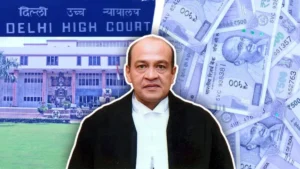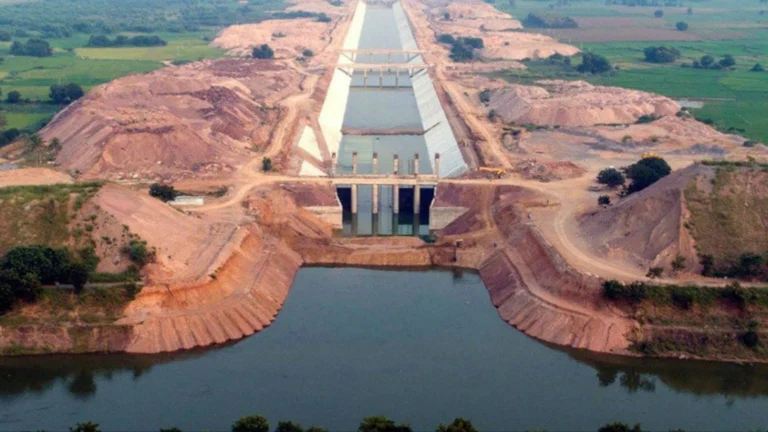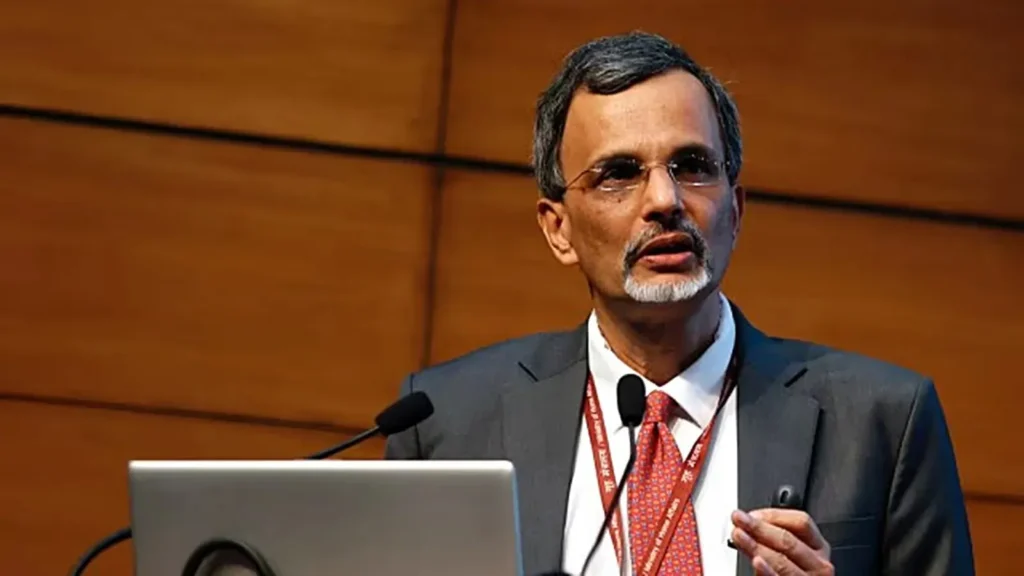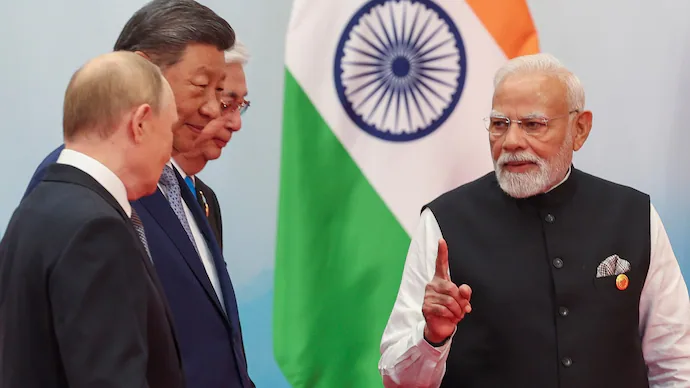September 01st Current Affairs
Table of Contents

Operation Sindoor
July 21st Current Affairs Home / Operation Sindoor Why in News? Parliament’s Monsoon Session, starting July 21, 2025, is expected to feature

Alaska Earthquakes
July 21st Current Affairs Home / Alaska Earthquakes Why in News? On July 21, 2025, Alaska Peninsula was struck by

August 2, 2027 Solar Eclipse
July 21st Current Affairs Home / August 2, 2027 Solar Eclipse Why in News? A total solar eclipse is set

India’s milestone in clean energy transition
July 21st Current Affairs Home / India’s milestone in clean energy transition Why in News? India achieved a milestone by

‘Baby Grok’, child-friendly AI app
July 21st Current Affairs Home / ‘Baby Grok’, Child-friendly AI app Why in News? Elon Musk’s AI company xAI has announced

Impeachment proceedings against Justice Yashwant Verma
July 22nd Current Affairs Home / Impeachment proceedings against Justice Yashwant Verma Context On July 22, 2025, impeachment proceedings against
Telangana CM orders a CBI Probe into Kaleshwaram Project

Relevance to UPSC (GS 2): Governance & Administration
- Highlights role of CBI and central agencies in investigating alleged corruption in state projects.
- Raises questions about federalism and center-state relations, as CBI probes involve central intervention.
- Reflects the importance of transparency, accountability, and ethical governance in public projects.
Headings
- Telangana CM Orders CBI Probe into Kaleshwaram Project
- Justice P.C. Ghose Commission Report Highlights Irregularities
- Political Repercussions and Accountability Measures
Context
On September 1, 2025, Telangana Chief Minister A. Revanth Reddy announced a Central Bureau of Investigation (CBI) inquiry into the alleged irregularities in the Kaleshwaram Lift Irrigation Project (KLIP). This decision followed the release of the Justice P.C. Ghose Commission report, which identified significant flaws in the project’s design, construction, and financial management.
Background
The Kaleshwaram project, initiated during the Bharat Rashtra Samithi (BRS) regime, aimed to irrigate vast agricultural lands in Telangana. However, the project faced criticism due to its rapid execution, cost overruns, and subsequent structural failures, including the collapse of key barrages. The Ghose Commission’s report further exacerbated concerns by implicating top officials and political leaders in alleged corruption and mismanagement
Reasons for the Probe
- Structural Failures: The collapse of Medigadda, Annaram, and Sundilla barrages raised questions about the project’s engineering integrity.
- Financial Mismanagement: The project incurred a debt exceeding ₹1 lakh crore, with allegations of fund misappropriation and lack of revenue generation mechanisms.
- Political Accountability: Opposition parties demanded accountability for the lapses, leading to the call for an independent investigation
Constitutional Provisions and Laws
- Article 21: Guarantees the right to life and personal liberty, necessitating transparency and accountability in public projects.
- Central Vigilance Commission Act, 2003: Empowers the CBI to investigate corruption and misconduct in government projects.
- Prevention of Corruption Act, 1988: Criminalizes corruption by public servants, providing a legal framework for prosecution.
Impacts
- Political Fallout: The probe has intensified political rivalries, with former Chief Minister K. Chandrashekar Rao and his associates facing scrutiny.
- Public Trust: The investigation may either bolster or erode public confidence in the state’s governance, depending on its outcomes.
- Financial Repercussions: The project’s financial mismanagement could impact future investments and funding for similar initiatives.
Challenges
- Legal Complexities: Investigating a project of this scale involves intricate legal and technical challenges.
- Political Interference: Ensuring the probe remains unbiased amidst political pressures is crucial.
- Public Expectations: Managing public expectations regarding the probe’s outcomes and timelines is essential.
Solutions and Way Forward
- Independent Oversight: Establishing an independent body to monitor the investigation can ensure transparency.
- Expert Involvement: Incorporating technical experts in the investigation process can address engineering-related concerns.
- Public Communication: Regular updates to the public about the probe’s progress can maintain trust and manage expectations.
Prelims MCQ
Q. What is the primary reason for the CBI probe into the Kaleshwaram project?
A. Environmental concerns
B. Alleged financial irregularities
C. Political differences
D. Public protests
The CBI probe was ordered due to allegations of financial mismanagement and corruption in the Kaleshwaram project.
Mains Question
Q. Discuss the implications of the CBI probe into the Kaleshwaram Lift Irrigation Project on governance, accountability, and public trust in Telangana. Analyze the constitutional and legal frameworks that support such investigations.
$467 Billion needed until 2030 to decarbonise four of India’s emission-heavy sectors

Relevance to UPSC (GS3)
1. Environmental Policy & Climate Action
- Highlights India’s commitment to reducing greenhouse gas emissions in line with Paris Agreement targets.
- Focuses on key emission-heavy sectors: power, steel, cement, and transport.
- Reflects challenges in transitioning to renewable energy and low-carbon technologies.
2. Sustainable Development & Energy Security
- Shows the financial and technological requirements for sustainable development.
- Links energy security with climate policy, emphasizing clean energy adoption and decarbonisation strategies.
- Relevant for government plans on solar, wind, green hydrogen, and electric mobility.
3. Economic Implications
- Decarbonisation requires $467 billion investment—impacts fiscal planning, foreign investment, and green financing.
- Connects with budget allocations, incentives for renewable energy, carbon trading, and green bonds.
- Highlights the role of private sector and public-private partnerships in sustainable industrial transformation.
Study Overview
A recent study by Janak Raj and Rakesh Mohan from the Centre for Social and Economic Progress (CSEP) reveals that India needs an additional $467 billion by 2030 to decarbonise four major emission-intensive sectors: power, steel, cement, and road transport. These sectors collectively account for over half of India’s CO₂ emissions. The study is the first sector-specific, bottom-up assessment of India’s climate finance needs, estimating $251 billion for steel, $141 billion for cement, $47 billion for power, and $18 billion for road transport .
Sectoral Investment Breakdown
- Steel: Requires $251 billion for technologies like carbon capture and storage.
- Cement: Needs $141 billion to mitigate emissions from both existing and projected growth.
- Power: An additional $47 billion is necessary to accelerate the shift to renewable energy.
- Road Transport: Demands $18 billion to transition to electric vehicles and infrastructure .
Context and Background
India’s commitment to achieving net-zero emissions by 2070 necessitates substantial investments in decarbonisation. Previous estimates suggested over a trillion dollars in climate finance requirements by 2030. This study offers a more conservative estimate, focusing on four critical sectors, thereby providing a clearer roadmap for policy and investment .
Reasons for High Capital Requirements
- Technological Challenges: Sectors like steel and cement are hard to decarbonise due to reliance on high-temperature processes.
- Infrastructure Overhaul: Transitioning to renewable energy and electric vehicles requires significant infrastructure development.
- Industrial Growth: Projected growth in these sectors increases the baseline emissions, necessitating higher investments to offset them .
Constitutional Provisions and Legal Framework
- Article 48A of the Indian Constitution:
- Mandates the State to protect and improve the environment.
- Emphasizes safeguarding forests and wildlife.
- Mandates the State to protect and improve the environment.
- National Action Plan on Climate Change (NAPCC):
- Provides a structured framework for addressing climate change.
- Comprises eight national missions, including:
- National Solar Mission
- National Mission for Enhanced Energy Efficiency
- National Mission on Sustainable Habitat
- National Water Mission
- National Mission for a Green India
- National Mission on Sustainable Agriculture
- National Mission on Strategic Knowledge for Climate Change
- National Mission on Electric Mobility
- National Solar Mission
- Provides a structured framework for addressing climate change.
Impacts on Economy and Society
- Economic Growth: Investments in green technologies can spur economic growth and job creation.
- Social Equity: Ensuring a just transition for workers in fossil fuel-dependent sectors is essential.
- Global Standing: Meeting climate targets enhances India’s credibility in international forums .
Challenges in Implementation
- Financing: Mobilising the required $467 billion poses a significant challenge.
- Policy Coordination: Aligning policies across various levels of government and sectors is complex.
- Technological Development: Scaling up and deploying new technologies in a timely manner is critical .
Proposed Solutions and Way Forward
- Public-Private Partnerships: Leveraging both public and private sector investments can bridge the financing gap.
- Policy Reforms: Streamlining regulations and providing incentives for green technologies can accelerate adoption.
- Capacity Building: Enhancing skills and infrastructure to support new industries is vital.
- International Cooperation: Engaging with global partners for technology transfer and funding can bolster efforts.
Prelims MCQ
Q. Consider the following statements regarding India’s climate governance framework: 1. Article 48A of the Indian Constitution directs the State to protect and improve the environment. 2. The National Action Plan on Climate Change (NAPCC) includes missions such as the National Solar Mission and National Mission on Electric Mobility. 3. NAPCC legally mandates state governments to implement its missions. Which of the statements given above is/are correct?
A. 1 and 2 only
B. 2 and 3 only
C. 1 and 3 only
D. 1, 2 and 3
Mains Question
Q. “Evaluate the role of Article 48A and the National Action Plan on Climate Change (NAPCC) in India’s transition to a low-carbon economy. Critically examine the effectiveness of these frameworks in ensuring state-level implementation and achieving climate targets.”
Disposable income of Indian households to be significantly higher this year, says CEA Nageswaran

Relevance to UPSC: Government Schemes & Social Welfare & Socio-Economic Development (GS 1 & 2)
Government Schemes & Social Welfare & Socio-Economic Development (GS 1 &2)
- Reflects the impact of government welfare programs, subsidies, and income support schemes on household income.Connects with direct benefit transfers (DBT), PM-KISAN, Ujjwala, and other social welfare measures.
- Helps assess the effectiveness of poverty alleviation and social security policies.
- Links economic growth to living standards, human development, and inequality reduction.
- Useful for analyzing regional disparities, rural-urban income gaps, and middle-class expansion.
- Provides context for SDGs like poverty reduction, economic growth, and decent living standards.
Economic Indicators & Policy & Financial Inclusion & Banking (GS 3):
- Disposable Income: Key indicator of household consumption capacity and economic well-being.
- Consumption & Demand: Higher disposable income can drive domestic consumption, demand-led growth, and market expansion.
- Macroeconomic Policy: Implications for monetary policy, fiscal planning, and inflation management.
- Higher disposable income indicates better penetration of financial services, banking, and digital transactions.
- Relevant to policies promoting financial literacy, credit access, and household savings.
Context
In August 2025, Chief Economic Advisor (CEA) V. Anantha Nageswaran announced that the disposable income of Indian households is projected to be significantly higher compared to the previous year. This optimistic forecast is attributed to a combination of lower inflation rates, direct tax cuts, and potential reductions in Goods and Services Tax (GST) rates.
Background
Disposable income refers to the amount of money households have available for spending and saving after income taxes have been deducted. In recent years, Indian households have faced economic challenges, including inflationary pressures and high taxation, which have constrained their disposable income
Reasons for Increased Disposable Income
- Lower Inflation: A decrease in inflation rates has led to reduced prices for essential goods and services, increasing the purchasing power of households.
- Tax Reforms: The government’s implementation of direct tax cuts has resulted in higher take-home pay for individuals.
- Potential GST Reductions: Anticipated cuts in GST rates could further lower the cost of goods and services, enhancing disposable income
Constitutional Provisions and Laws
- Article 246: Empowers the Union and State governments to make laws on subjects listed in the Union, State, and Concurrent Lists, including taxation.
- Article 265: States that no tax shall be levied or collected except by the authority of law.
- Goods and Services Tax (GST) Act, 2017:
- Consolidated multiple indirect taxes (like excise, VAT, service tax) into a single tax regime.
- Simplified the tax structure for both businesses and consumers.
- Aims to reduce the overall tax burden on consumers and increase ease of compliance.
- Consolidated multiple indirect taxes (like excise, VAT, service tax) into a single tax regime.
Impacts
- Consumer Behavior: Increased disposable income may lead to higher consumer spending, stimulating economic growth.
- Savings and Investments: With more disposable income, households might increase their savings and investments, contributing to financial stability.
- Economic Growth: Higher consumer spending can drive demand, leading to increased production and economic expansion.
Challenges
- Income Inequality: The benefits of increased disposable income may not be evenly distributed, potentially widening the gap between different socio-economic groups.
- Sustainability: Maintaining low inflation and ensuring consistent tax reforms are crucial for the long-term sustainability of increased disposable income.
- Global Economic Factors: External factors, such as global economic downturns, can impact domestic disposable income levels.
Solutions
- Targeted Policies: Implementing policies that specifically address income disparities can ensure that the benefits of increased disposable income reach all segments of society.
- Monitoring Inflation: The Reserve Bank of India should continue to monitor inflation closely and adjust monetary policies as needed to maintain price stability.
- Global Engagement: Engaging in international trade agreements and economic collaborations can help mitigate the impact of global economic fluctuations.
Prelims MCQ
Q. Which of the following factors is NOT directly associated with an increase in disposable income?
A. Reduction in direct taxes
B. Increase in inflation rates
C. Decrease in GST rates
D. Lower prices of essential goods
An increase in inflation rates typically erodes purchasing power, thereby reducing disposable income. Conversely, reductions in direct taxes, GST rates, and lower prices of essential goods contribute to an increase in disposable income.
Mains Question
Q. “Discuss the implications of the projected increase in disposable income for Indian households in 2025. Analyze the potential economic benefits and challenges, and suggest policy measures to ensure equitable distribution of this increased income.”
83% of Indians trust gut feelings over AI when making decisions

Relevance to UPSC
- Governance & Technology (GS-II/III):
- Relates to Digital India initiatives, e-governance, and AI adoption in public policy.
- Demonstrates challenges in decision-making frameworks and ethical technology use.
- Relates to Digital India initiatives, e-governance, and AI adoption in public policy.
- Science & Technology (GS-III):
- Understanding AI, machine learning, and automation in administration and business.
- Highlights societal response to AI and technology adoption issues.
- Understanding AI, machine learning, and automation in administration and business.
- Ethics and Human Values (GS-IV):
- Raises questions about ethical decision-making, trust, and human judgment versus algorithmic decisions.
- Raises questions about ethical decision-making, trust, and human judgment versus algorithmic decisions.
- Policy Formulation & Public Administration:
Insights for framing AI policies, guidelines, and regulatory frameworks to ensure public trust.
Context
A recent LinkedIn study reveals that 83% of Indian professionals prioritize intuition and trusted colleagues over artificial intelligence (AI) when making significant decisions. Despite AI’s growing influence in workplaces, human judgment remains central to critical decision-making processes.
Background
As AI technologies advance, their integration into professional settings has been rapid. However, this study highlights a persistent reliance on human intuition, suggesting a cautious approach to fully embracing AI in decision-making.
Reasons for Human Preference Over AI
- Trust and Reliability: Human judgment is perceived as more reliable, especially in complex or ambiguous situations where AI may lack contextual understanding.
- Ethical Considerations: Decisions involving moral or ethical dilemmas often require a human touch, as AI may not align with societal values.
- Emotional Intelligence: Humans can empathize and consider emotional factors, which AI might overlook.
- Accountability: Professionals may feel more accountable for decisions made by humans, whereas AI decisions can be seen as less transparent.
Impacts
- Workplace Dynamics: Emphasis on human judgment may slow AI adoption, affecting efficiency.
- Skill Development: There’s a growing need for professionals to balance AI proficiency with critical thinking skills.
- Policy Formulation: Governments may need to create frameworks that address AI’s role in decision-making processes.
Challenges
- Resistance to Change: Entrenched reliance on human judgment can hinder AI integration.
- Data Privacy Concerns: AI’s dependence on data raises issues about user privacy and data security.
- Bias in AI Algorithms: AI systems can perpetuate existing biases if not properly monitored.
Solutions
- Education and Training: Enhance AI literacy among professionals to bridge the knowledge gap.
- Ethical AI Development: Promote the creation of AI systems that are transparent, fair, and accountable.
- Regulatory Frameworks: Establish policies that govern AI usage, ensuring it complements human decision-making.
Way Forward
India should focus on developing AI technologies that augment human capabilities rather than replace them. Collaboration between AI and human intelligence can lead to more informed and balanced decision-making processes.
Prelims MCQ
Q. Which of the following factors most significantly influences Indian professionals' preference for human judgment over AI in decision-making?
A. AI's inability to process large datasets
B. Lack of trust in AI algorithms
C. Human emotional intelligence and ethical considerations
D. Government regulations limiting AI usage
Indian professionals prioritize human judgment over AI due to factors like emotional intelligence and ethical considerations, which AI currently cannot replicate effectively. While trust in AI and regulations play roles, the primary influence is the human ability to navigate complex, value-laden decisions.
Mains Question
Q. “Evaluate the implications of the preference for human judgment over artificial intelligence in decision-making processes within Indian workplaces. Discuss the challenges and propose strategies to integrate AI effectively while preserving human oversight.”
SCO Strongly Condemns Pahalgam Terror Attack After PM Modi's Nudge

Context
Prime Minister Narendra Modi’s visit to China in August 2025 marks his first in seven years, highlighting a significant diplomatic engagement between the two nations. The bilateral meeting with President Xi Jinping occurred on the sidelines of the Shanghai Cooperation Organisation (SCO) Summit in Tianjin, emphasizing the importance of regional cooperation and stability.
Background
- Historical Relations: India and China share a complex history, characterized by periods of cooperation and tension, notably the 1962 border conflict and the 2020 Galwan Valley clashes.
- Recent Developments: The 2020 border clashes strained relations, but subsequent disengagement efforts and diplomatic dialogues have aimed at restoring peace and stability.
- Global Dynamics: The evolving geopolitical landscape, including the U.S.-China tensions and shifting alliances, has influenced India’s foreign policy, prompting a recalibration of its relations with China.
Reasons for the Visit
- Diplomatic Engagement: To resume high-level dialogues and address bilateral issues.
- Economic Cooperation: To explore avenues for enhancing trade and investment between the two countries.
- Regional Stability: To discuss regional security concerns and promote peace along the shared border.
- Strategic Autonomy: To assert India’s position on maintaining strategic autonomy in foreign relations.
Constitutional Provisions and Laws
- Article 51 of the Indian Constitution: Directs the State to foster respect for international law and treaty obligations.
- Parliamentary Approval: International treaties and agreements require ratification by the Indian Parliament, ensuring democratic oversight.
Impacts
- Bilateral Relations: Potential for improved diplomatic ties and economic collaboration.
- Regional Security: Enhanced communication may lead to better management of border tensions.
- Global Standing: India’s proactive engagement with neighboring powers can bolster its position in international forums.
Challenges
- Trust Deficit: Lingering mistrust from past conflicts may impede progress.
- Economic Imbalance: Trade deficits and market access issues remain contentious.
- Strategic Concerns: Aligning with global powers while engaging with China presents diplomatic balancing acts.
Solutions
- Confidence-Building Measures: Establishing communication channels to address border issues promptly.
- Economic Dialogues: Negotiating trade agreements that address imbalances and promote mutual growth.
- Multilateral Engagement: Participating in regional forums to foster cooperative security arrangements.
Way Forward
India should continue to engage with China through diplomatic channels, focusing on areas of mutual interest while safeguarding national security. Balancing economic cooperation with strategic considerations will be key to maintaining a stable and productive relationship. Active participation in multilateral platforms like the SCO can further India’s objectives of regional stability and global influence.
Prelims MCQ
Q. Which constitutional provision directs the Indian State to foster respect for international law and treaty obligations?
A. Article 51
B. Article 14
C. Article 368
D. Article 370
Article 51 of the Indian Constitution mandates the State to promote international peace and security, fostering respect for international law and treaty obligations. This provision underscores India's commitment to international diplomacy and adherence to global norms, influencing its foreign policy decisions, including engagements like the SCO Summit.
Mains Question
Q. Discuss the challenges and opportunities in India-China relations post-Galwan clashes, with reference to the recent SCO Summit in Tianjin.




